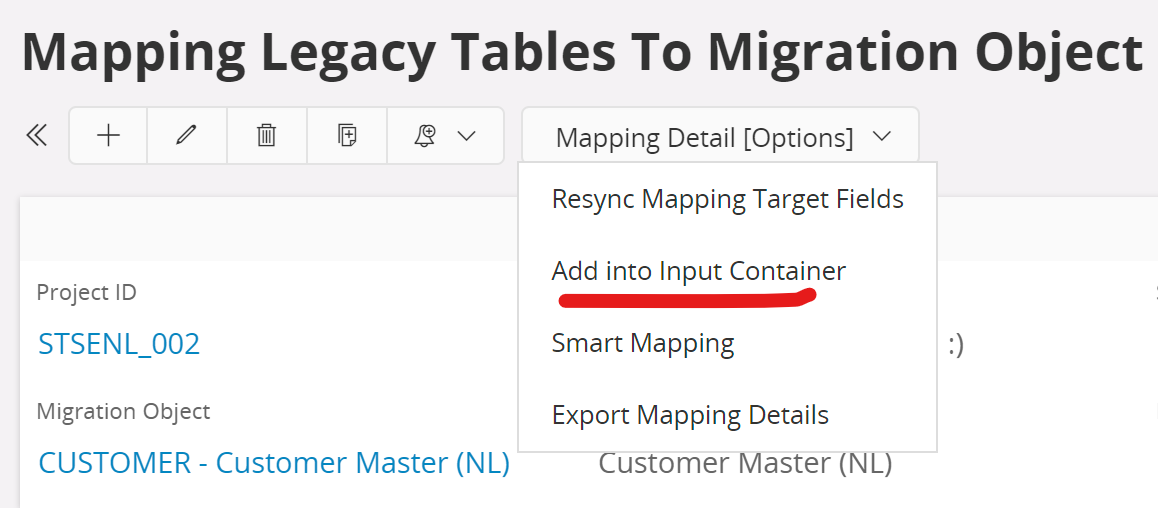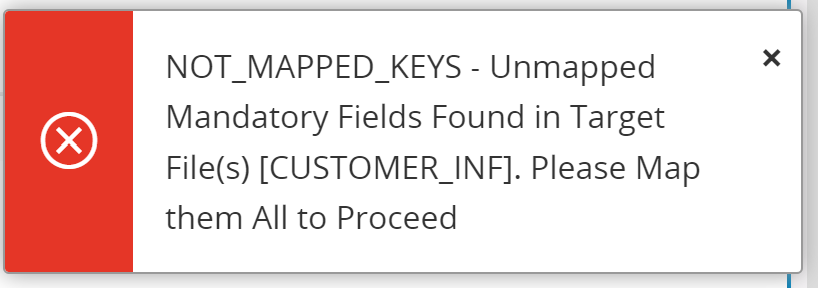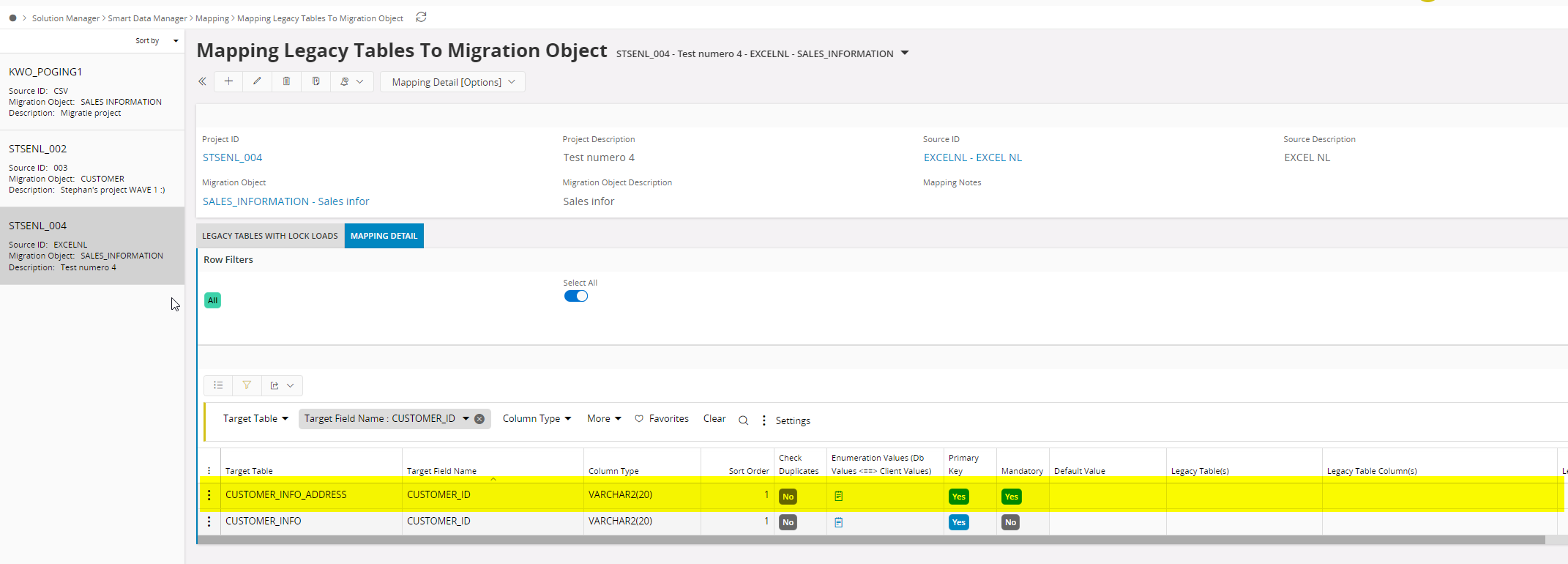Hello,
We are working on data migrations of a 21R2 customer using the smart data manager. We have first started working with CUSTOMER_INFO and CUSTOMER_INFO_OUR_ID which has a parent-child relationship, both objects are in scope and target definition tables are also created.
Our next step is to add the data in to the input container in "Mapping Legacy Tables To Migration Object” window.
When we click on "Mapping Detail [Options]” > “Add into Input Container” we get the below error.


We investigated and found out the issue is triggered by the primary key/s of CUSTOMER_INFO_OUR_ID.

Default values are empty.
Please let us know what we are doing wrong here?











